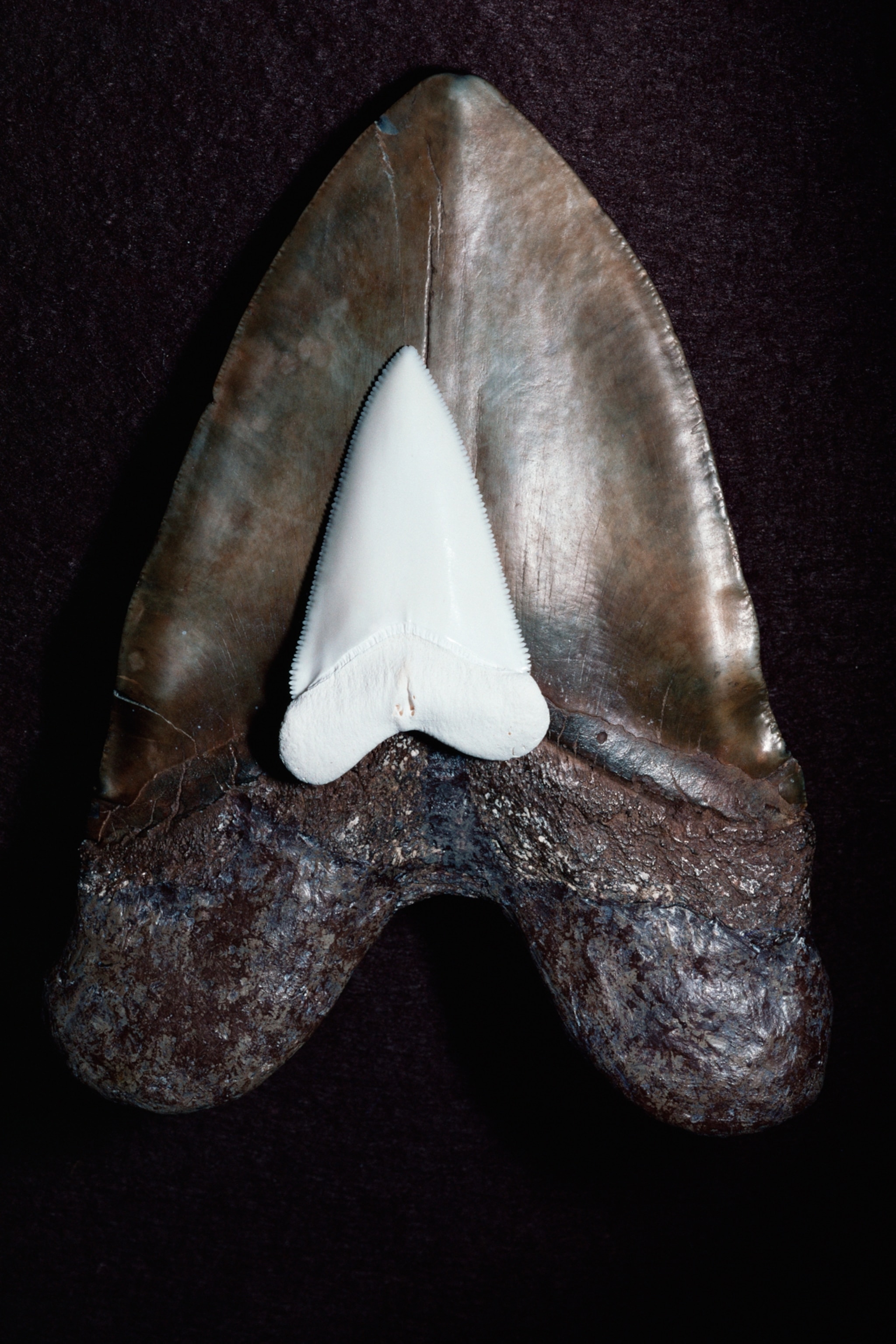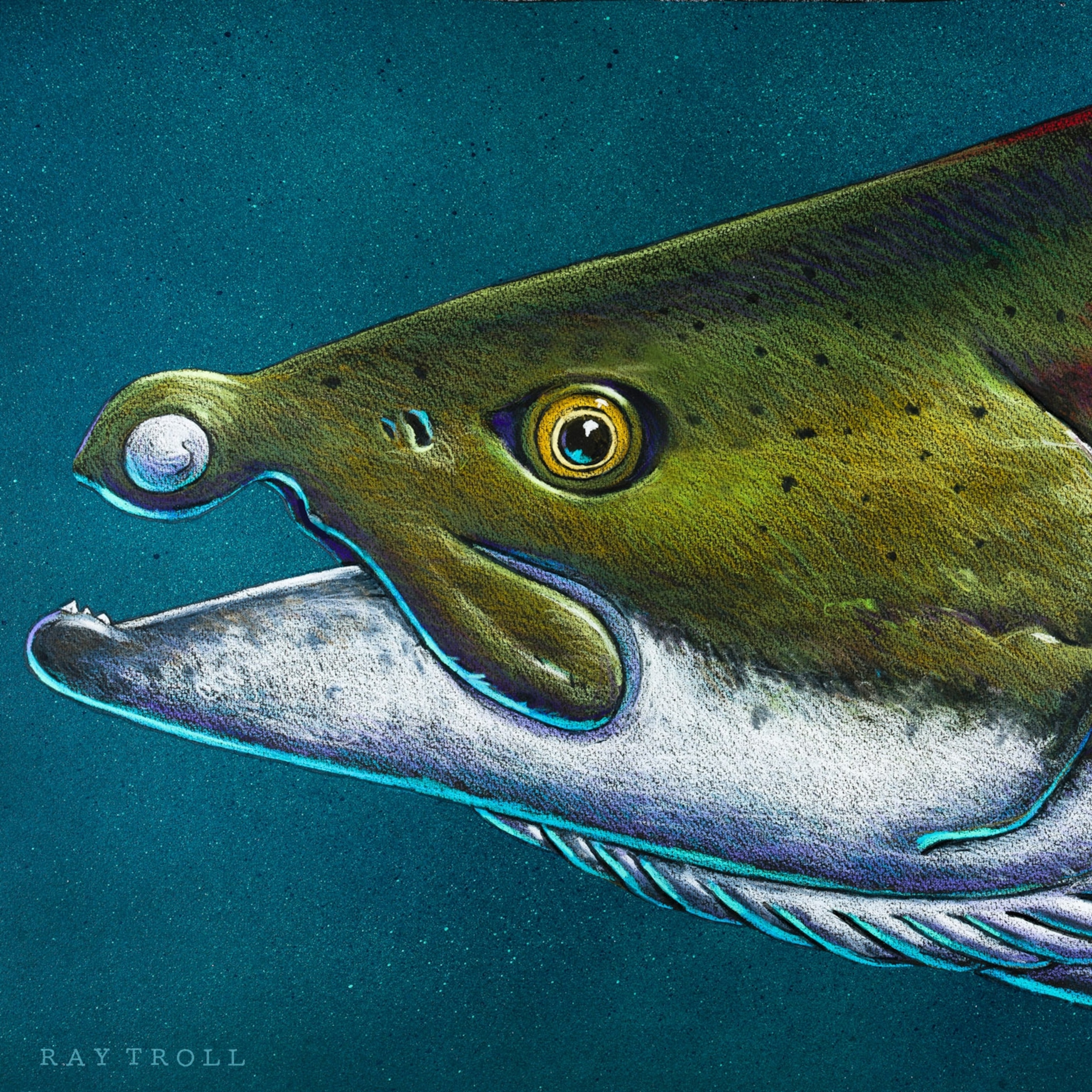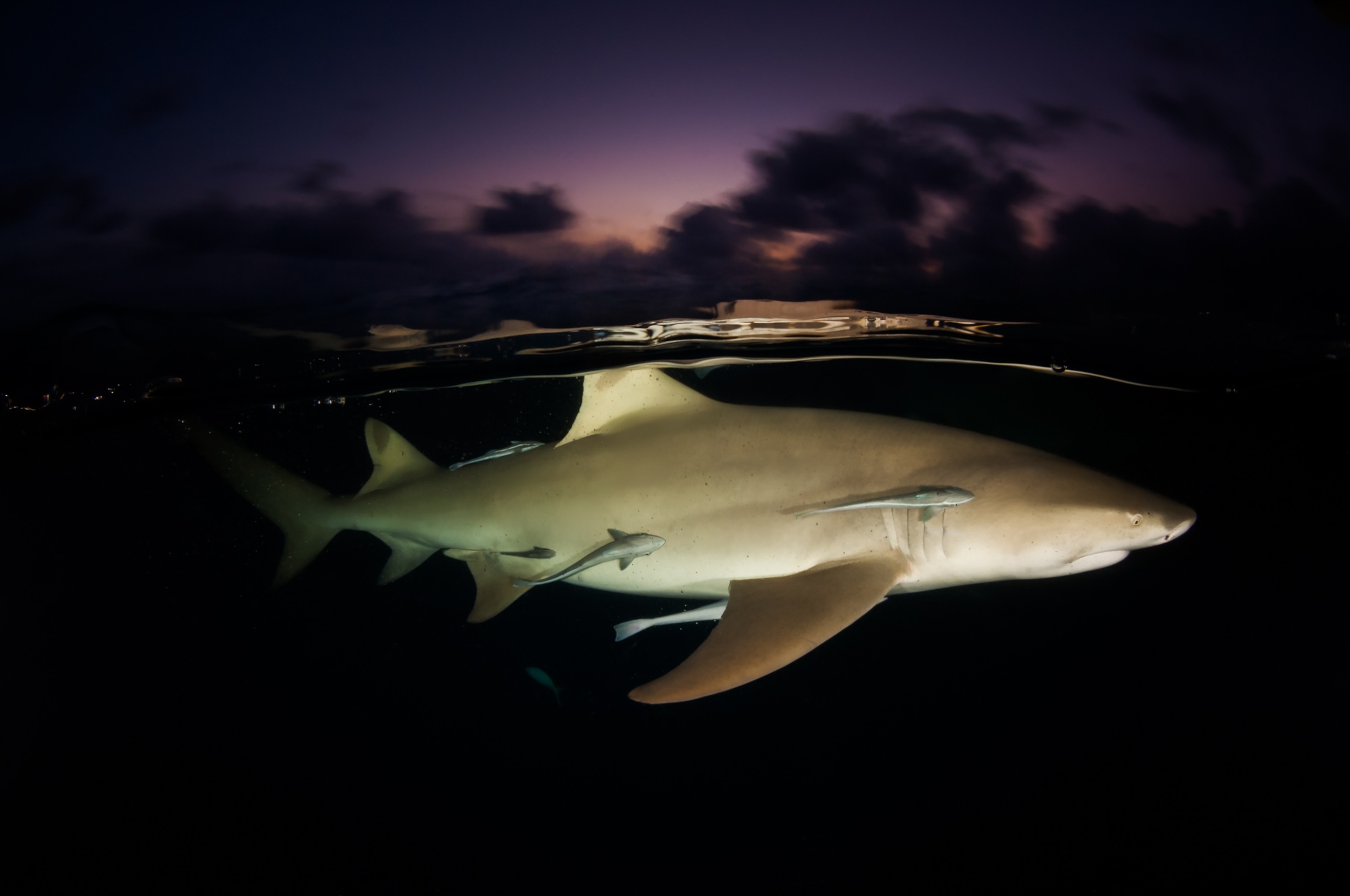Close your eyes and imagine the ancient, abominable megalodon.
You’re probably picturing a great white shark scaled up to gargantuan proportions, right? Well, a new study suggests the world’s largest-ever shark may have been longer and more svelte than once thought.
“Previous studies simply assumed that megalodon must have looked like a gigantic version of the modern great white shark without any evidence,” says Kenshu Shimada, a vertebrate paleontologist at DePaul University in Chicago.
Both the great white and megalodon (Otodus megalodon) have prominent serrations on their teeth, similar to a steak knife. This originally made scientists think that great whites (Carcharodon carcharias) were the direct descendants of the meg, as the popular movie franchise refers to the beast.
However, more recent research has suggested that megalodon belonged to different branch of the shark family tree. And yet, the comparison to whites remained, if for no other reason than a lack of a better alternative, says Shimada.
But now, in a study published today in the journal Palaeontologia Electronica, Shimada and more than two dozen other experts propose that megalodon would have had a much less stocky body plan than the barrel-chested great whites.

Inspiring exploration for over 130 years
Subscribe now a get a free tote
The scientists were also able to come up with a new estimate for megalodon’s total length, which at its most extreme might have stretched up to 80 feet (24.3 meters) in length. Previous estimates put the meg at around 50 feet (15 meters) max. That would mean the largest megalodons may have been nearly the size of a blue whale.
“Our new value represents the most reasonable maximum possible estimated [total length] for megalodon based on the present fossil record and data,” says Shimada.
Estimating megalodon’s length requires detective work

No megalodon jaw fossils have ever been discovered. The replicas seen at many museums are all based on size estimates from teeth or other partial fossils.
Photograph by Alexander Demianchuk, Reuters/Redux

Like great white sharks, the megalodon had serrations or jagged edges in its teeth, which previously led paleontologists to think that the two were related.
Photograph by Doug Perrine, Nature Picture Library
For some ancient creatures, scientists have entire skeletons with which to reconstruct what the animals may have looked like in life. But for the megalodon, the task is much more difficult.
The fossil record only contains vertebrae, teeth, scales, and some fragments of cartilage from megalodon. Some paleontologists have used teeth or the vertebral columns of great whites to figure out how big the ancient shark might have been. But whole portions of megalodon remain a mystery—including the head, tail, and fins. (So if you’ve ever gotten your picture taken in front of a megalodon jaw at a museum, you were standing in front of a best guess, because no jaw for the meg has ever been found.)
To fill in the gaps, Shimada and his colleagues developed a new method to estimate the body length of the leviathan, using a nearly complete vertebral column from Belgium and another incomplete vertebral column from Denmark. By comparing them to the body plans of 170 other shark species, both living and extinct, they then were able to estimate how large that particular megalodon’s head and tail would have been—about six feet (1.8 meters) and 12 feet (3.6 meters) long. In total, this would have made the Belgian megalodon specimen 54 feet (16.4 meters) long.
However, because one of the vertebrae belonging to the Denmark find was considerably bigger than the largest vertebrae in the Belgian spine, the scientists could then scale up their estimates to arrive at the new, breathtaking total length.
(Explore how humans size up to sharks in our interactive graphic.)
Why megalodon might have been skinnier than previously thought
Next, the scientists tried to determine what megalodon’s “fineness ratio” would have been. “In the simplest term, a fineness ratio is a measure of how slender a body or an object is,” says Shimada.
Again, the team turned to measurements from living and long-dead sharks. The largest living sharks, such as the whale shark and basking shark, have slimmer body plans which grant the giants greater hydrodynamic efficiency as they ply through the ocean. But if you were to scale a great white shark’s body plan up to megalodon-like lengths, the resulting animal would have had a more difficult time swimming through the water.
“Although we still need direct fossil evidence, our new study suggests that it is more likely than not that megalodon must have been more slender than the modern great white shark in terms of body proportion from the hydrodynamic standpoint,” says Shimada.
You May Also Like

Jack Cooper, who was not affiliated with the new study but has also tried to estimate megalodon’s size, commended the authors for the new body size estimate of the Belgian fossil, as well as for their method of not using just one analog—such as the great white—to make those calculations.
“However, the support for a slender body form is tentative at best,” says Cooper, a palaeobiologist at Swansea University in Wales.
“Could megalodon have been slenderer than previous reconstructions? Sure, it’s possible,” says Cooper. “But the study doesn’t outright say how much slenderer nor does it definitively rule out previous interpretations.”
The biggest baby shark ever? Doo do doo do

A new body plan and length estimate suggests that the megalodons may have resembled a giant version of a lemon shark (one shown in the Bahamas).
Photograph by David Doubilet, Nat Geo Image Collection
While each of these estimates will remain tentative until bigger and better megalodon fossils are found, Shimada and his colleagues suspect that megalodon would have actually looked a lot more like a colossal lemon shark.
Native to the coasts surrounding North and South America, as well as western Africa, “the lemon shark has a conventional shark body plan,” says Shimada. “Sort of an ‘average Joe’ in the shark world.”
The scientists also made a number of other assertions based on the evidence they do have. For instance, hydrodynamic analyses based on the new body shape also suggest that even at full size, megalodon would have been no faster than modern-day great whites.
Similarly, by counting the growth bands within vertebrae, they estimate that newborn megalodons would have been around 12 to 13 feet in length at the time of birth. If true, it would mean megalodon had the biggest babies in the history of fishes.
Young megalodons may have grown quickly for their first seven years of development, right up until the point where they would have outgrown the possibility of being preyed upon by great white sharks. This is an important area of study, as many scientists believe competition with whites is part of what lead to the megalodon’s eventual extinction.
Cooper found the biggest baby aspect “pretty exciting,” but noted that the idea about young megalodons growing faster to outpace great whites is “highly speculative.”
“In short, everything presented here is interesting but should be taken with a grain of salt until they can either be empirically tested, or a complete skeleton of megalodon is found to confirm one way or the other,” says Cooper.
It’s not about being the biggest fish
In recent years, the public has become really invested in megalodon research. But both Cooper and Shimada agree that obsession over maximum size and answering hypothetical questions, such as whether megalodon could beat the extinct whale known as Livyatan in a fight, are distractions.
Such things “disregard the rather amazing biology we’ve learned about this iconic, real species that existed, and reduce it to what I can only describe as a video game character,” says Cooper.
For instance, another recent study coauthored by Shimada found geochemical evidence that suggests megalodon may have been at least partially warm-blooded. And this advantage may have allowed the predator to pursue whales farther and into colder waters, setting the stage for it to attain massive sizes. (Read more about what made megalodon such a terrifying predator.)
With so little fossil evidence to go on, it’s possible that megalodon looked absolutely nothing like any of these estimates.
“The possibility cannot be eliminated until well-preserved complete or nearly complete skeletons are found,” says Shimada. Until then, “we are constrained by the data.”



